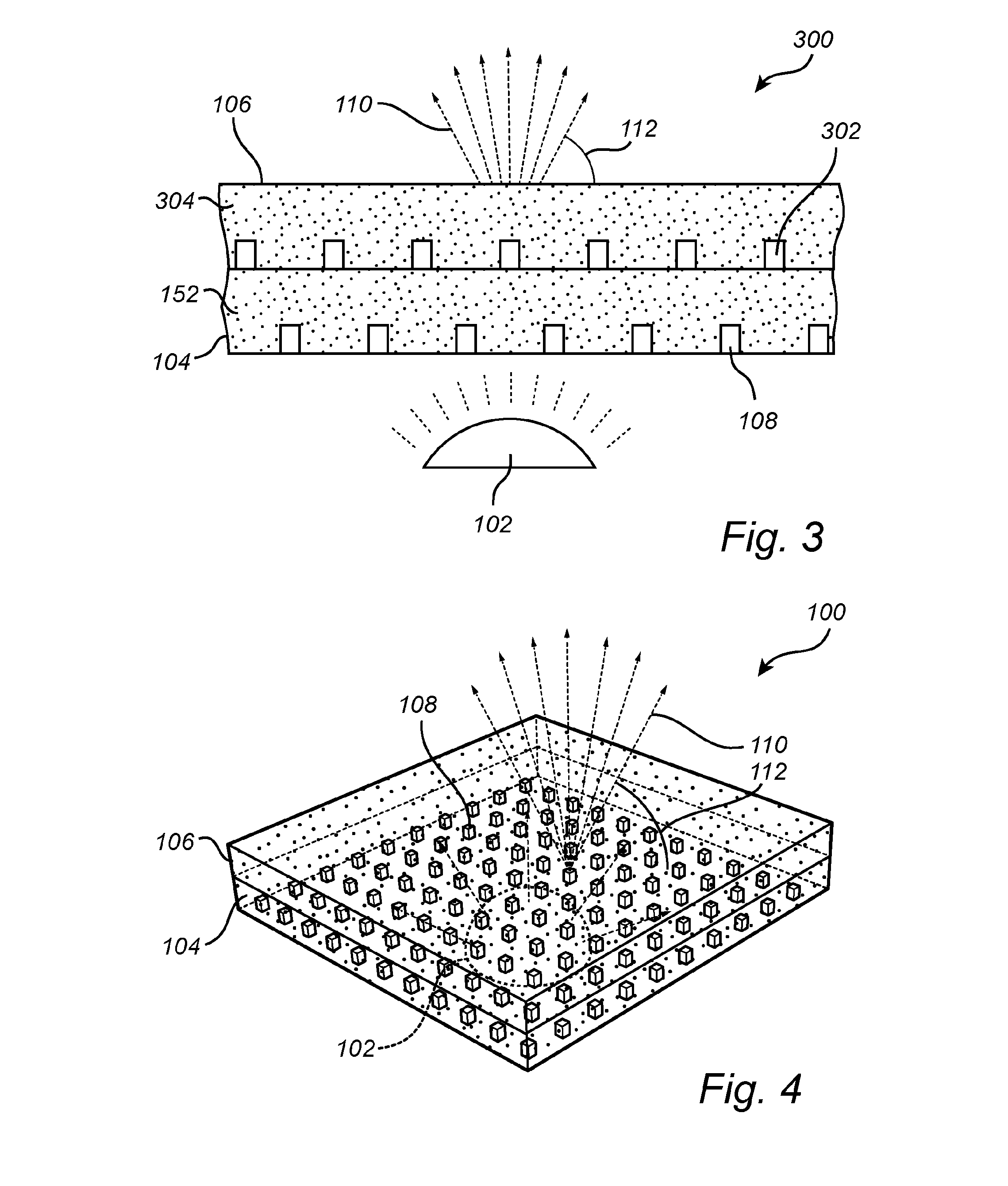Enhanced emission from plasmonic coupled emitters for solid state lighting
a technology of coupled emitters and solid-state lighting, which is applied in the direction of semiconductor devices, basic electric elements, electrical apparatus, etc., can solve the problems of scattering losses, absorption losses, and further losses
- Summary
- Abstract
- Description
- Claims
- Application Information
AI Technical Summary
Benefits of technology
Problems solved by technology
Method used
Image
Examples
Embodiment Construction
[0054]The present invention will now be described more fully hereinafter with reference to the accompanying drawings, in which exemplary embodiments of the invention are shown. This invention may, however, be embodied in many different forms and should not be construed as limited to the embodiments set forth herein; rather, these embodiments are provided for thoroughness and completeness, and fully convey the scope of the invention to the skilled person. Like reference characters refer to like elements throughout.
[0055]FIG. 1 is a schematic illustration of an illumination device 100 comprising a plurality of photon emitters 152 arranged in close proximity to a periodic plasmonic antenna array comprising a plurality of individual antenna elements 108 arranged in an antenna array plane as illustrated by FIG. 4.
[0056]The distance between the photon emitter 152 and one or more antenna elements of the plasmonic antenna array is preferably below 5 micrometers, in another embodiment below ...
PUM
 Login to View More
Login to View More Abstract
Description
Claims
Application Information
 Login to View More
Login to View More - R&D
- Intellectual Property
- Life Sciences
- Materials
- Tech Scout
- Unparalleled Data Quality
- Higher Quality Content
- 60% Fewer Hallucinations
Browse by: Latest US Patents, China's latest patents, Technical Efficacy Thesaurus, Application Domain, Technology Topic, Popular Technical Reports.
© 2025 PatSnap. All rights reserved.Legal|Privacy policy|Modern Slavery Act Transparency Statement|Sitemap|About US| Contact US: help@patsnap.com



